National Register of Historic Places: Washington DC Travel Itineraries
Spotlighting geographic regions and themes across the country, the National Park Service (NPS) National Register Heritage Travel Itineraries invite visitors to experience the many significant places in American history, architecture, archeology, engineering, and culture. Each of the approximately 60 itineraries is a self-guided tour to more than 3,000 historic places, most of which are listed in the National Register of Historic Places.
Why not start with a tour of our nation's capital?
Washington, DC: A Guide to the Historic Neighborhoods and Monuments of Our Nation's Capital was produced by NPS in cooperation with GSA, the Washington, DC State Historic Preservation Office, the Historical Society of Washington, DC, the DC Heritage Tourism Coalition, the National Trust for Historic Preservation, and the National Conference of State Historic Preservation Officers.
The following GSA properties are part of the tour. The links in the titles take you to the GSA historic building database, with detailed information on the building's design and history. The links in the text take you to the DC Heritage guide pages, which provide a rich historical context for the buildings.
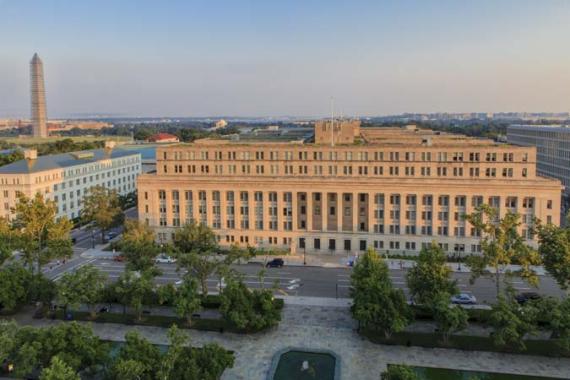
Stewart Lee Udall Department of the Interior Building
Built between 1935 and 1936, the Stewart Lee Udall Department of the Interior Building represents President Franklin Roosevelt’s renewed emphasis on managing the nation’s natural and historic resources. With three miles of corridors and 15 acres of office space, the mammoth building is utilitarian and austere, but also contains 38 major works of art, including a notable collection of murals.
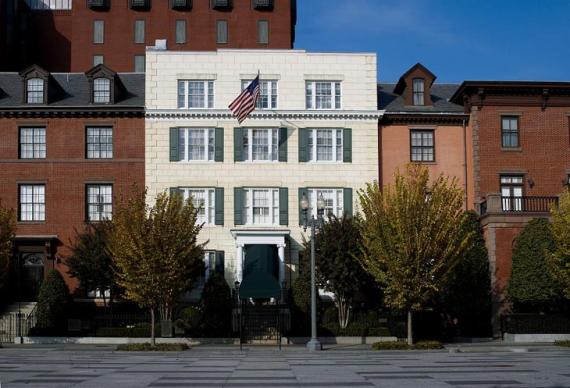
President's Guest House (Blair House) Photograph by Carol M. Highsmith
The President’s Guest House consists of four visually distinct yet interconnected nineteenth-century townhouses, the most prominent of which is Blair House. Constructed in 1824, Blair House derives its name from its second owner, Francis Preston Blair, who was an advisor to President Andrew Jackson and later presidents. It was here, in April 1861, that Blair presented Colonel Robert E. Lee with President Abraham Lincoln’s request that he command the Union Army—an offer Lee declined. In 1942, the federal government acquired the property and transformed it to accommodate official guests of the United States government.
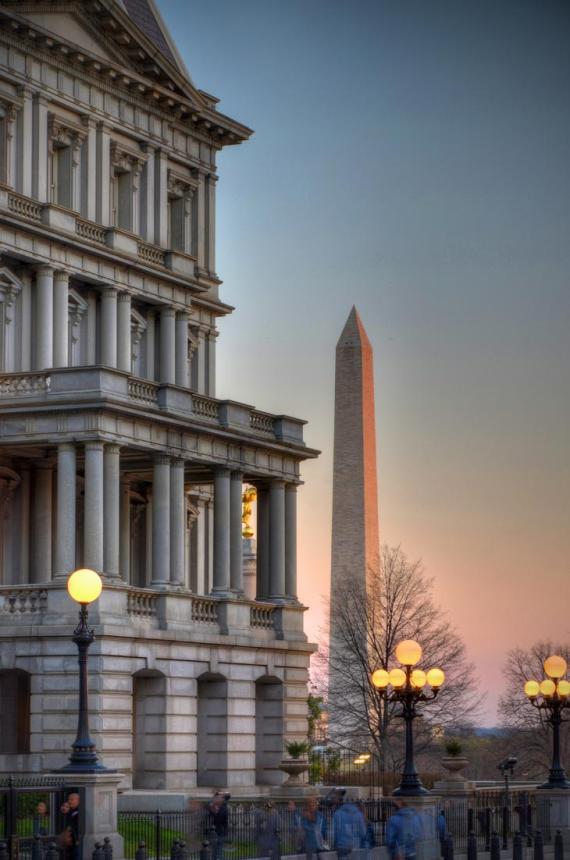
Dwight D. Eisenhower Executive Office Building
Designed by Alfred B. Mullett, the Dwight D. Eisenhower Executive Office Building (EEOB) was built between 1871 and 1888 as the State, War, and Navy Building—bringing these rapidly growing interrelated government departments together under a single roof.
After World War I, the Navy, War Department, and State Department vacated it. In 1949 the building was named the Executive Office Building to better identify its occupants, the Bureau of the Budget and White House staff. The building has housed all vice presidents and their staffs, beginning with Lyndon B. Johnson. It has been associated with people, events, and decisions of great historic importance to the country.
Designated a National Historic Landmark in 1969, it was renamed the Dwight D. Eisenhower Executive Office Building in 1999.
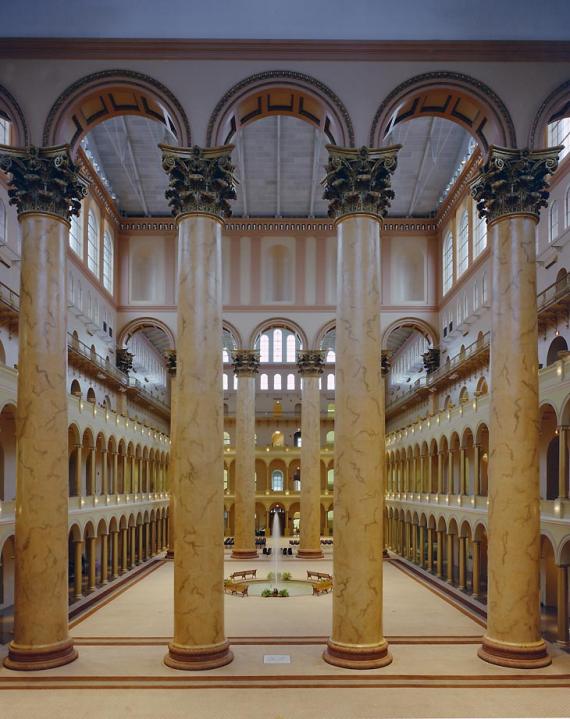
U.S. Pension Building, home to the National Building Museum
Designed by Army Quartermaster General Montgomery C. Meigs in 1881, the Pension Building stands as a memorial to Civil War veterans. Massive in size and scale, the Italianate Renaissance Revival style red brick building has a terracotta frieze designed by sculptor Caspar Buberl depicting a continuous parade of Civil War military units. The interior plan is dominated by a full-height hall or atrium at the center, with interconnecting rooms at the perimeter. The Great Hall is divided into three courts by two sets of four colossal Corinthian columns.
The Pension Building is home to the National Building Museum.
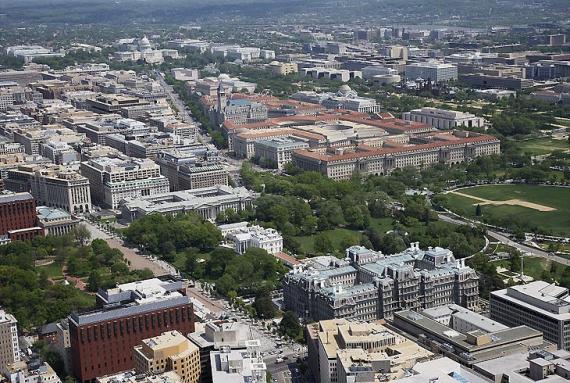
Pennsylvania Avenue National Historic Site Photograph by Carol M. Highsmith
One of the country’s most famous streets, Pennsylvania Avenue has been a backdrop to American history as presidential inaugural parades, victory marches, and political protests have walked its route. Designated the Pennsylvania Avenue National Historic Site in 1965, the broad, diagonal avenue connects the U.S. Capitol Building and the White House. The city's first downtown street, by the late nineteenth century it was cluttered with boarding houses and tattoo parlors. The Romanesque Revival style post office building represents one of Congress’s earliest—though not last—attempts to improve the area.
The park consists of the walkways along either side of Pennsylvania Avenue. Look for the special brown pavers on the sidewalks to determine whether you are in this national park site. The United States Navy Memorial, Freedom Plaza, The Old Post Office Tower, the American Expeditionary Forces Memorial and Pershing Park are all part of this national park.
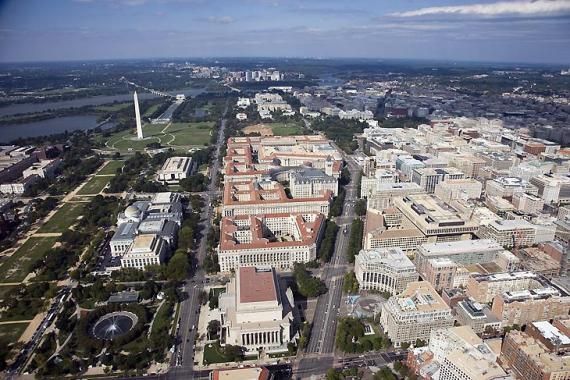
Federal Triangle Photograph by Carol M. Highsmith
The Public Buildings Act of 1926 authorized Congress to fund a large-scale initiative to develop a 70-acre site between the White House and U.S. Capitol with federal buildings executed in classical styles of architecture. The resulting project, the Federal Triangle, is located between Pennsylvania Avenue, Constitution Avenue and 15th Street, NW and is part of the Pennsylvania Avenue National Historic Site. It is comprised of a unified group of monumental, classically inspired federal office buildings designed by private architects.

 U.S. General Services Administration
U.S. General Services Administration





